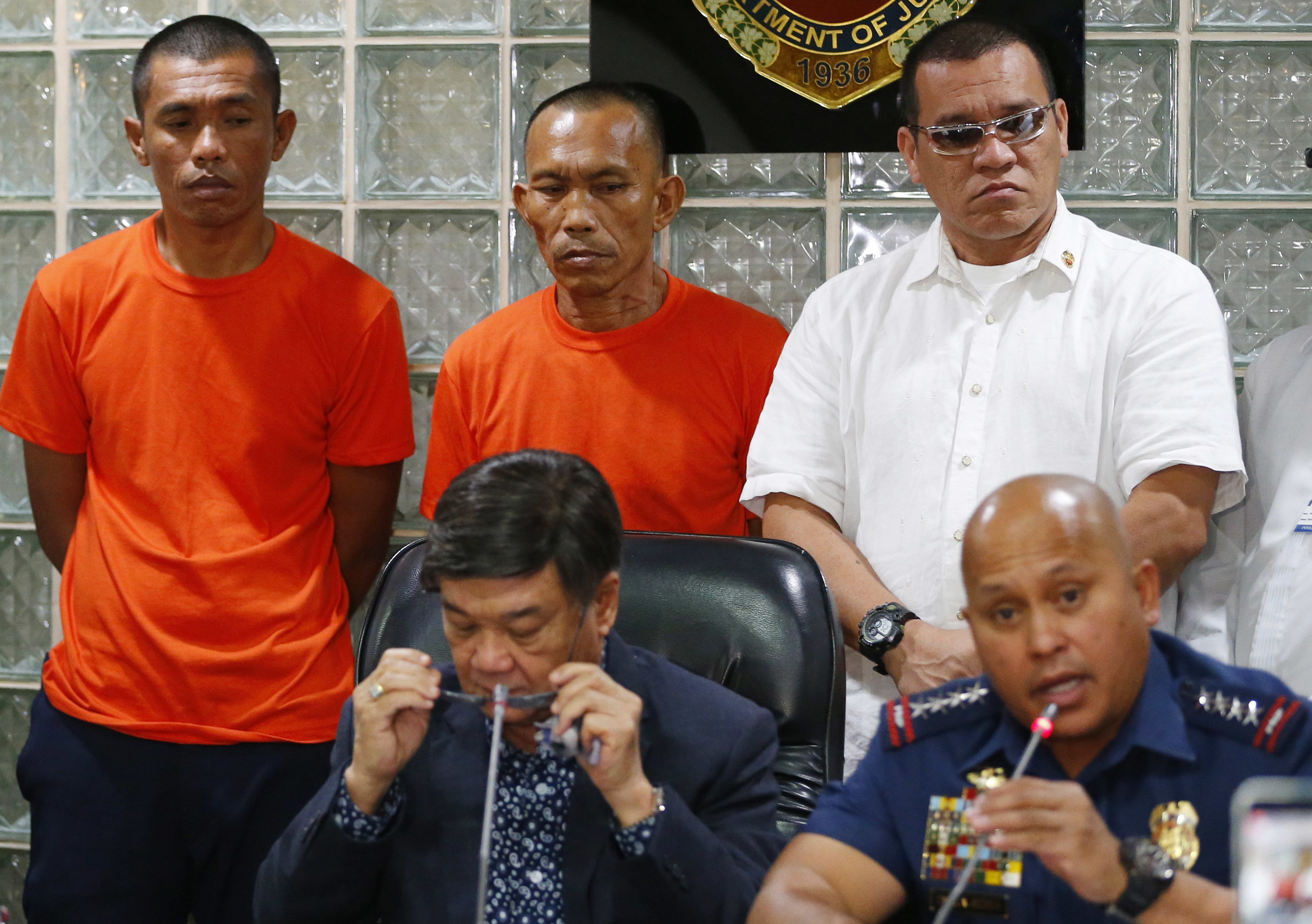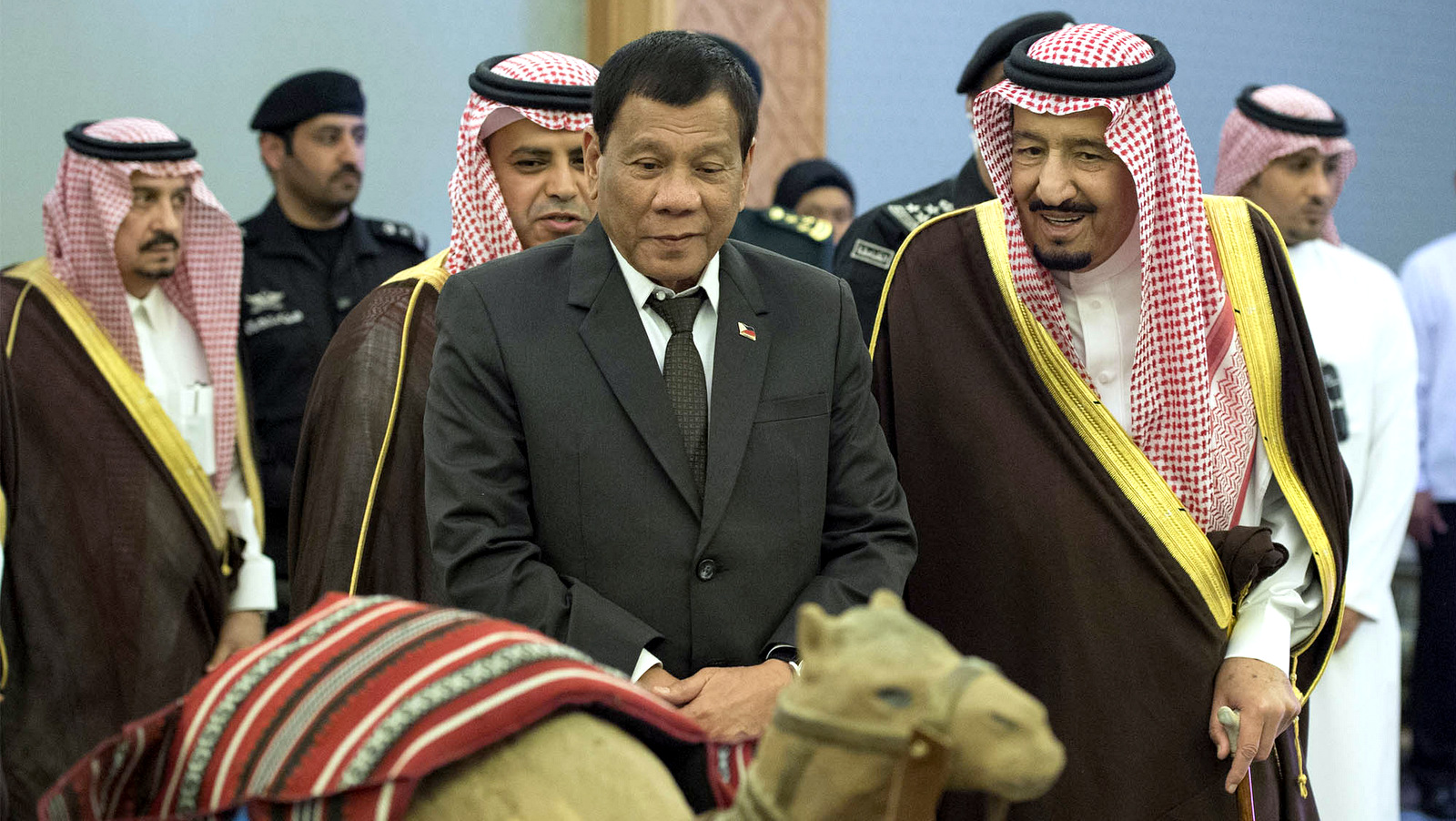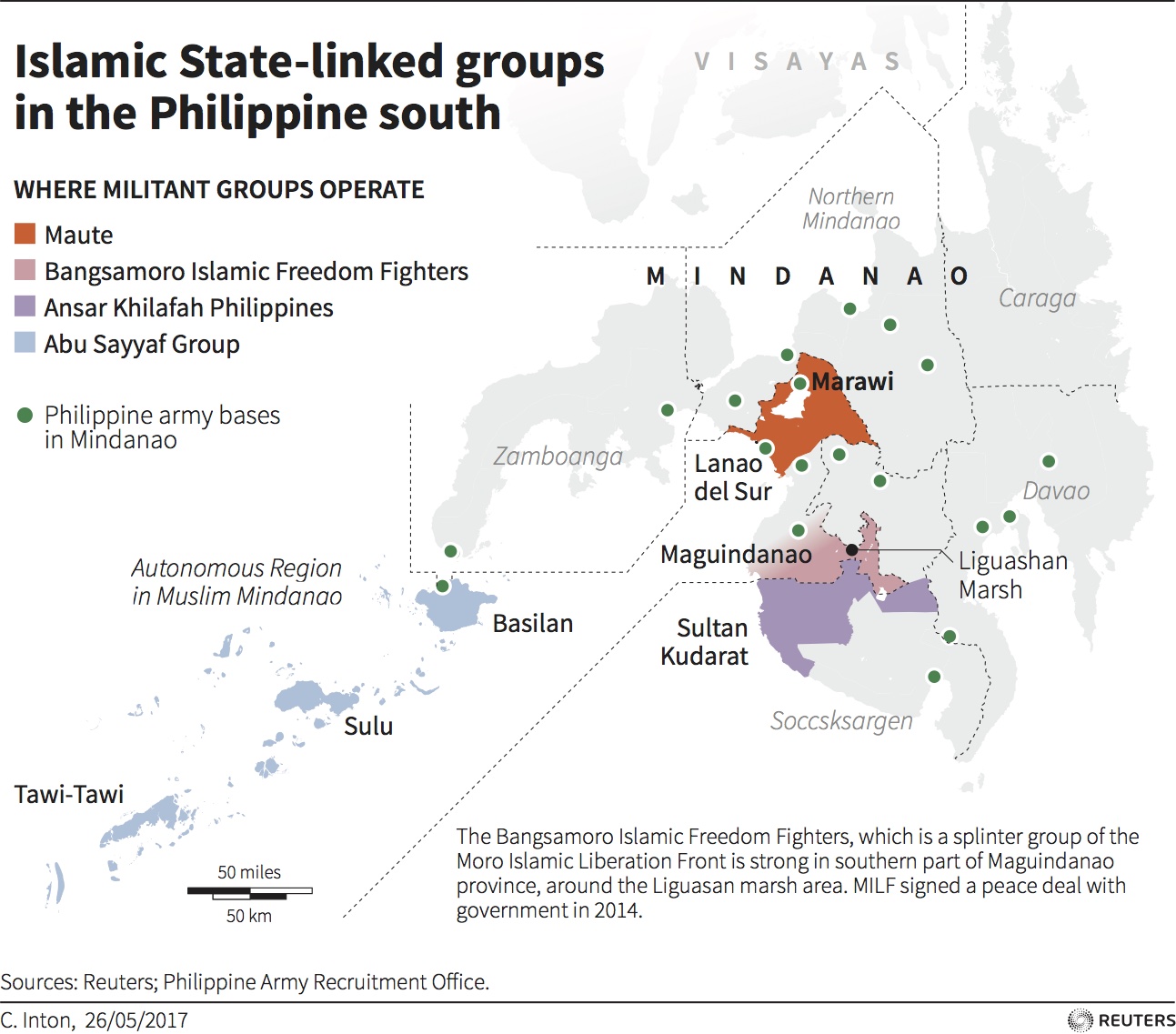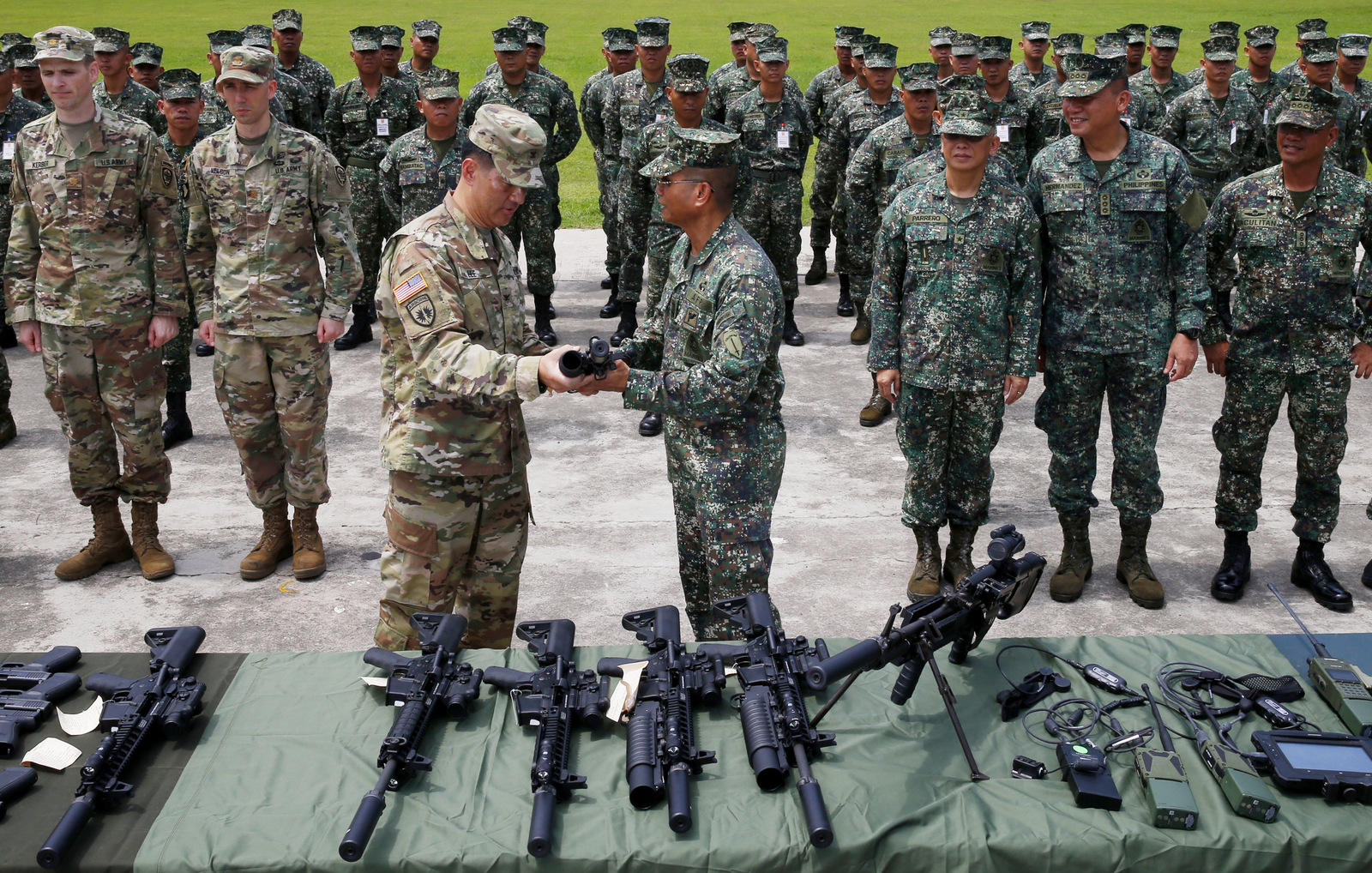MANILA, PHILIPPINES (Analysis) — ISIS’ inevitable decline in Iraq and Syria, the credit for which is almost always wrongly bestowed upon the Trump administration, has provided windows of opportunity for the global terror group to spawn insurgencies in other locations.
On December 20, 2017, MintPress News reported how this foreseeable ISIS “diaspora” would lead to renewed operations not only in places like Afghanistan and Libya, but also in Southeast Asian countries such as the Philippines.
As recent developments will show, it is indeed the Philippines that looks to be overrun by ISIS-inspired terrorism in the not-too-distant future — a convenient state of affairs for the U.S. military, which has been itching to intervene and cement its role as the major power-player in the region.
A brief background
An ISIS-linked insurgency made headlines near the end of last year, and eventually culminated in the U.S. military’s direct assistance in the Philippines’ government crackdown (unsurprisingly enough, the U.S. involvement took place without President Rodrigo Duterte’s consent).
At the time, the Military Times asserted that even while Filipino forces, together with the U.S., eventually retook the embattled areas in Mindanao (Mindanao houses over 22 million people in total), the insurgents “made them pay a heavy price” for over three months. The Times also noted that the Philippines is “ripe for ISIS recruitment, due to sectarian tensions between the country’s Muslim communities, primarily located on Mindanao, and its Catholic and Protestant populations in northern Philippines.”
In other words, this month-long battle was merely the beginning.
Recent developments hitting the Philippines

Suspected Abu Sayyaf militants are presented during a news conference at the National Bureau of Investigation headquarters, March 12, 2018 in Manila. (AP/Bullit Marquez)
At the beginning of March this year, the Armed Forces of the Philippines (AFP) began validating reports that 23 armed groups in the country had consolidated their forces under one name: “ISIS Philippines.” These 23 groups are mostly based in Mindanao, and include a faction of Abu Sayyaf, the infamous group responsible for the biggest reported terror attack on Philippines’ soil. The military also confirmed that the ISIS-linked group Maute is in the process of recruiting and reorganizing following its defeat last year.
“We are not discounting the possibility that they plan another attack. That’s what we are trying to preempt,” said military spokesman Brig. Gen. Bienvenido Datuin, according to CNN.
Leaked memos from the Philippine National Police appeared to indicate that ISIS bombers already had their sights set on populated areas in Manila, including malls and plazas.
Near the end of February of this year, the U.S. State Department added ISIS’ Philippines component and six other purportedly Islamic extremist groups to the U.S. list of designated terrorists.
In mid-March, the AFP also confirmed that new clashes had erupted in Maguindanao province on the southern island of Mindanao, which allegedly killed 44 Islamic militants belonging to the Bangsamoro Islamic Freedom Fighters (BIFF), a group which also pledged its allegiance to ISIS. According to the Asia Times, the BIFF members did not deliberately attack troops, but were instead chanced upon by the 2nd Mechanized Infantry Battalion troops of the 6th Infantry Division in the swamplands of Datu Saudi Ampatuan, some five hours away from the city of Marawi (the area under siege last year).
Read more by Darius Shahtahmasebi
- Israeli Bombs Are Raining down on Gaza and No One Is Talking About It
- Historically Anti-Apartheid New Zealand Confronts Risks of BDS and Standing Up to Israel
- Retired US Colonel: Israel Is Dragging the United States Into World War III
- What the Media Won’t Tell You About the US’ True Intentions in Syria
According to the Asia Times, assets looted during the Marawi siege are being used to attract new recruits to the ISIS-inspired movements. Even after Marawi had been retaken by the AFP, Defense Secretary Delfin Lorenzana admitted that foreign ISIS fighters have been arriving in the Southern Philippines, including Indonesian and Malaysian fighters, who both served with ISIS in Iraq and Syria.
Approximately two years ago, Time magazine reported that at least 1,200 Southeast Asians had joined ISIS’ ranks in the wider Middle East. An article from the Manila Times written in October 2014 also claimed that some 200 Filipinos were believed to have left the Philippines to fight in the Islamic caliphate in Iraq and Syria. At the time, former President, Defense Secretary, and armed forces chief Fidel Ramos stated:
At least 100 of our young Filipino Muslims have already infiltrated Iraq to undergo training to return and be jihadists or militants.” [emphasis added]
If this was known to the authorities and the media back then, one can only wonder how it is that these fighters are able to move so freely, even to this day, between three separate geographical locations, including known warzones in Iraq and Syria — and whether or not this freedom of movement is permitted intentionally. That being said, one WikiLeaks cable suggested that “lax” border control, “especially in Mindanao’s ‘southern backdoor’ that leads to Malaysia or Indonesia — enables criminals and terrorist financiers to come and go with impunity.”
Tracing the money

Saudi Arabia’s King Salman (right) welcomes President Rodrigo Duterte during a reception ceremony in Riyadh, Saudi Arabia. (Bandar Algaloud/Saudi Royal Court)
The evidence shows that it is not an exaggeration that Saudi footprints can be found wherever there are hints of a jihadist movement. In an article for The Washington Post, even CNN Host Fareed Zakaria found no problem acknowledging as much:
In Southeast Asia, almost all observers whom I have spoken with believe that there is another crucial cause [behind the spread of Islamic extremism] – exported money and ideology from the Middle East, chiefly Saudi Arabia. A Singaporean official told me, ‘Travel around Asia and you will see so many new mosques and madrassas built in the last 30 years that have had funding from the Gulf. They are modern, clean, air-conditioned, well-equipped – and Wahhabi [Saudi Arabia’s puritanical version of Islam].’
Recently, it was reported that Saudi Arabia plans to contribute almost $1 billion to build 560 mosques in Bangladesh. The Saudi government has denied this, but sources in Bangladesh tell me there’s some truth to the report.” [emphasis added]
The Week explained two years ago that Saudi Arabia spent billions of dollars “investing heavily in building mosques, madrasas, schools, and Sunni cultural centers across the Muslim world.” According to The Week, these Saudi-sponsored “institutions and clerics preach the specifically Saudi version of Sunni Islam, the extreme fundamentalist strain known as Wahhabism or Salafism.”
Wahhabism is the same strand of Islam that ISIS has employed to hold the world ransom. Just recently, Saudi Crown Prince Mohammed bin Salman (MBS) admitted that Saudi Arabia had spread its strain of Wahhabism across the world, but that it was done so at the behest of Western allies to counter the Soviet Union during the Cold War.
Furthermore, a leaked memo obtained by WikiLeaks, signed by Hillary Clinton herself, states that “[d]onors in Saudi Arabia constitute the most significant source of funding to Sunni terrorist groups worldwide.”
Saudi’s spread of jihadist ideology has reached past the Middle East and Southeast Asia and has penetrated deep into the Asia-Pacific region. According to The New York Times, Saudi Arabia has “for decades spread its conservative strand of Islam in the Maldives by sending religious leaders, building mosques and giving scholarships to students to attend universities.”
 The South China Morning Post then reported that Indian intelligence sources are claiming hundreds of Maldivians joined ISIS in Syria. As one can expect from this notorious pattern of behavior, the radical Islamist elements currently leading the insurgency in the Philippines also receive notable support and funding from Saudi Arabia.
The South China Morning Post then reported that Indian intelligence sources are claiming hundreds of Maldivians joined ISIS in Syria. As one can expect from this notorious pattern of behavior, the radical Islamist elements currently leading the insurgency in the Philippines also receive notable support and funding from Saudi Arabia.
Dr. Yousaf Butt, a senior advisor to the British American Security Information Council and director at the Cultural Intelligence Institute, has confirmed that Saudi Arabia’s reach has also extended far into the Philippines. He explains:
In many places in poor Muslim countries the choice is now between going to an extremist madrassa or getting no education at all. Poverty is exploited to promote extremism. The affected areas include Pakistan, Indonesia, the Philippines, Malaysia, Thailand, India and parts of Africa.” [emphasis added]
One WikiLeaks cable, dated November 2, 2005, stated the following:
Philippine officials noted their continuing concern about Saudi-origin terrorist financing coming into the Philippines under the cover of donations to mosques, orphanages, and madrassahs. Although three Saudi nationals suspected of being couriers had been detained on separate occasions, Saudi Ambassador Wali had intervened in each case to secure their release.”
Another WikiLeaks cable affirmed:
NGOs have apparently been used as cover for illicit activity in the past, and not just for terrorist finance. Deposed [Philippine] President Joseph Estrada allegedly used his “ERAP Muslim Youth Foundation” to launder illegal gambling proceeds. The International Islamic Relief Organization (IIRO) — a subsidiary of the Saudi-based and funded Muslim World League (MWL) — was active here in the late 1980s and early 1990s.
Operated by Usama Bin Laden’s brother-in-law, Saudi businessman Mohammed Jamal Khalifa, and with links to captured al-Qaeda lieutenant Khalid Shaikh Mohammed, the IIRO served as a legal front to conceal the transfer of al-Qaeda funding and materiel to the Abu Sayyaf Group and possibly other insurgents or terrorists operating in the Philippines.
Although Khalifa left the Philippines in 1994 and the IIRO was shut down, there remain concerns that his network and associates may still be operating here.” [emphasis added]
A third WikiLeaks cable outlines a foiled plot to bomb embassies in Manila, a plot that involved a Jordanian national and Saudi resident, suspected of financing the operation.
In February 2017, Defense Secretary Lorenzana told Reuters “there’s quite an amount of money being sent here from the Middle East,” as large numbers of Filipinos regularly receive remittances from Saudi Arabia and the smaller Gulf states.
Despite the overwhelming evidence that Saudi Arabia is the source of Islamic extremism plaguing states all over the geopolitical chessboard, President Rodrigo Duterte just met with Saudi Prince Abdulaziz bin Saud bin Naif and the two of them reportedly reaffirmed their longstanding commitment to combat extremism and terrorism.
America’s growing involvement

Philippine Maj. Gen. Emmanuel Salamat, receives an M4 rifle with grenade launcher from U.S. Army Col. Ernest Lee during turnover of brand new military weapons and other equipment, June 5, 2017 in Taguig city, Philippines. (AP/Bullit Marquez)
According to the Military Times, the Pentagon changed its assistance mission in the Philippines from Operation Enduring Freedom-Philippines to Operation Pacific Eagle last year, a move that “highlights a new, ramped up counterterrorism focus in the region.”
Read more about Operation Pacific Eagle
- Operation Pacific Eagle: Duterte Falls in Line with US Plans for the Philippines
- Operation Pacific Eagle in the Philippines: Washington’s New Colonial War
- Operation Pacific Eagle: The US and Duterte Take Aim at China and the Armed Poor
“The Philippines and United States governments remain steadfast in their alliance and are committed to countering radicalization and violent extremism in the Philippines and Southeast Asia,” said Marine Lt. Col. Christopher Logan, a Pentagon spokesman, according to the Military Times last year.
As of the end of last year, there were approximately 100 U.S. troops, mostly Marines, in the Philippines, according to the Defense Manpower Data Center.
Just recently, the U.S. officially gifted six Boeing Insitu ScanEagle drones to the Philippines, approved via a U.S. grant of over $13 million. At around the same time, in a public display of disapproval, President Rodrigo Duterte openly said he would not allow Filipino troops to be dragged into U.S.-led conflicts unless the Philippines is under direct threat, firmly stating:
I am addressing America right now. Whatever expeditions that you will conduct, any wars that you will fight in any other countries, count us out. Wala kaming nakuha [we have got nothing from] all these years of sacrifice except brutality and agony. We will stand [on] our own.”
Under the Obama administration, the U.S. was secretly drone bombing the country — which, as we have come to learn, is a disturbing way for the U.S. to continue to expand ISIS’ recruitment pool.
Top Photo | Two suspected Abu Sayyaf militants Hood Abduallah, left, and Jimmy Bla wait to be presented to the media by Justice Secretary Vitaliano Aguirre in a news conference at the National Bureau of Investigation headquarters Monday, March 12, 2018 in Manila, Philippines. In the Justice Department press statement, the two were arrested in Zamboanga, southern Philippines and allegedly were involved in kidnappings in 2001 and 2002 including that of American missionaries Martin and Gracia Burnham. (AP Photo/Bullit Marquez)
Darius Shahtahmasebi is a practicing attorney with an interest in human rights, international law, and journalism. He is a graduate of the University of Otago, where he obtained degrees in Law and Japanese. Follow him on Twitter at @TVsLeaking.
The post Primed by Saudi Money and Influence, the ISIS Diaspora Reaches the Philippines appeared first on MintPress News.
